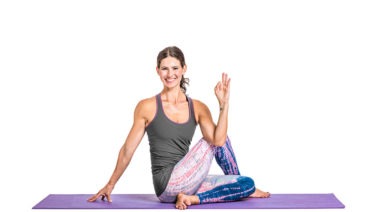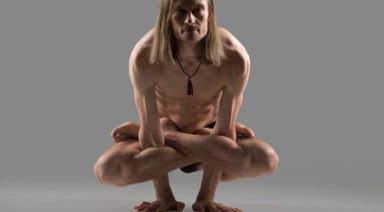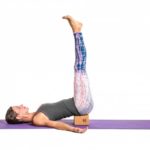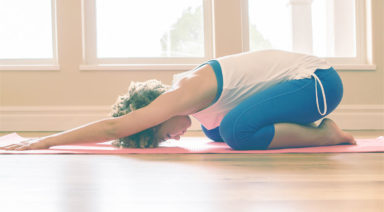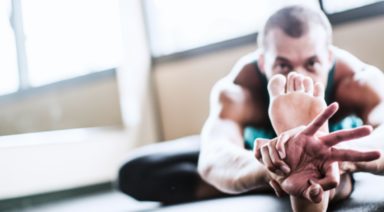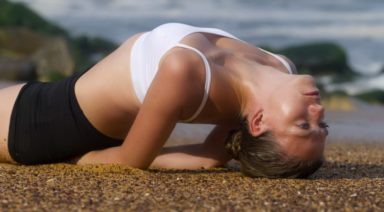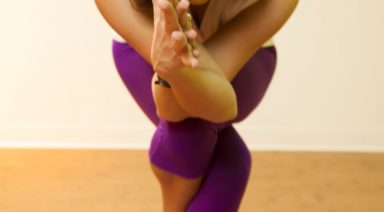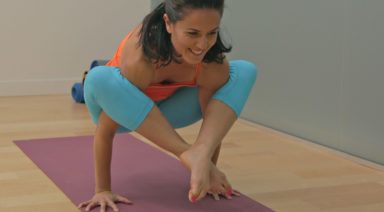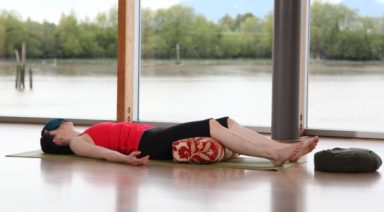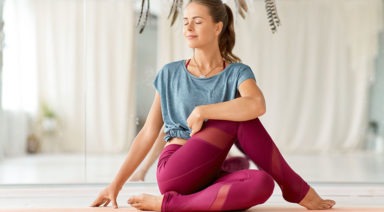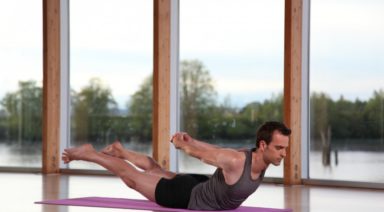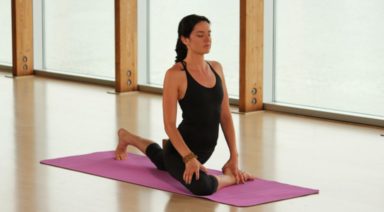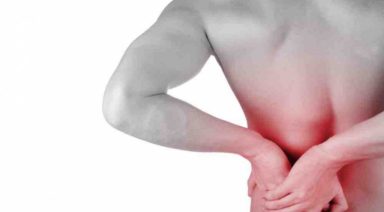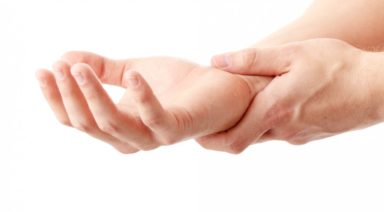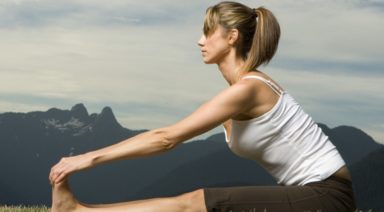Utthita Hasta Padangusthasana: Extended Hand to Toe Pose

Utthita hasta padangusthasana (oo-TEET-uh HAWS-tuh POD-ung-goos-THAWS-un-nuh), also known as extended hand-to-toe pose, is a challenging and invigorating posture that stretches and strengthens while calming the mind and improving focus.
STEP-BY-STEP
- Start standing with your hands on your hips. Draw your left knee in towards your belly and interlace your fingertips in front of your shin. Level your hips so they are equidistant from the ground. Pause here for a breath.
- Reach your left hand on the inside of your left knee and take hold of your big toe with your first and second fingers. Stay here, or lengthen your spine and extend your foot forward any amount.
- Hold for 3-5 breaths and release back to standing. Repeat on the other side.
ADJUSTMENTS/MODIFICATIONS
- For help with balance, try this pose with your free hand against a wall.
- Keep the knee on your extended leg bent, or wrap a strap around your foot and take hold of the strap.
- Option to extend your foot out to the side, and opposite arm out to the other side. Keep your shoulders level and relaxed away from the ears.
SANSKRIT
- Utthita = extended
- Hasta = hand
- Pada = foot
- Angustha = big toe
- Asana = pose
PHYSICAL BENEFITS
- Stretches hamstrings and hips.
- Stretches the inner leg line (adductors).
- Strengthens the back and arm muscles.
ENERGETIC BENEFITS
- Improves sense of balance.
- Calms the mind and improves focus.
PREPARATORY POSES
- Reclined hand to toe pose | Supta padangusthasana
- Monkey lunge | Anjanayasana
- Half splits | Ardha hanumanasana
SEQUENTIAL POSES
- Dancing Shiva pose | Parivrtta hasta padagusthasana
- Front splits | Hanumanasana
- Downward-facing dog | Adho mukha svanasana
COUNTER POSES
- Reclined hero pose | Supta virasana
- Standing forward bend | Uttanasana
- Dancers pose | Natarajasana
###Legal Disclaimer Before participating in any exercise program or using any fitness products or services that may be described and/or made accessible in or through the Gaia Website and/or the Services, you should consult with a physician or other healthcare provider. Read more about Gaia’s Terms Of Use.
Ardha Matsyendrasana: Half Lord of the Fishes Pose
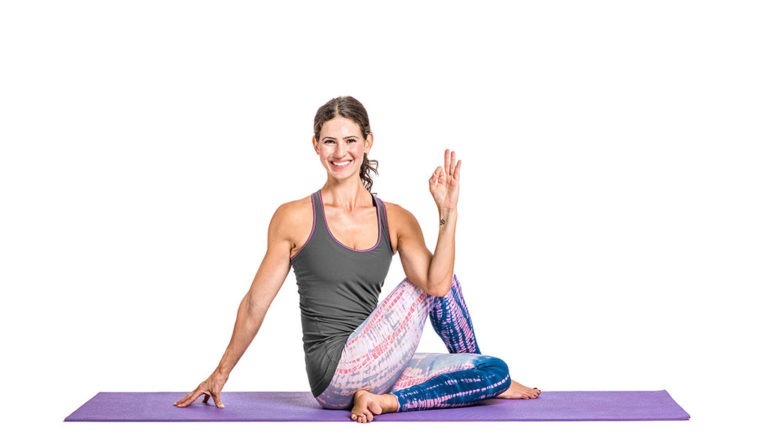
ADJUSTMENTS | BENEFITS | SEQUENCING | SANSKRIT | STEPS
Ardha matsyendrasana (ARE-dah MOT-see-en-DRAHS-ah-nah) is an approachable twist that opens the shoulders and chest. A good antidote for too much sitting and symptoms that come with overusing technology, half lord of the fishes pose has the ability to increase energy in the body while also stoking the digestive fire in your belly.
Philosophy + Origin
Matsyendra is often recognized as one of the original founders of hatha yoga in yogic mythology. He was said to be a baby who was thrown into the ocean after his parents rejected him. The story of Matsyendra reminds us that it’s often the parts of our personal stories we don’t like or don’t want to accept that can be the most beneficial, especially on the path to becoming a yogi or yogini. Rather than conceptualizing the twist to be a purge of what is unwanted or unnecessary, think of the detoxification as a purification, an opportunity to take what was once viewed or understood as “bad” and transform it into something that is helpful on your personal journey.


